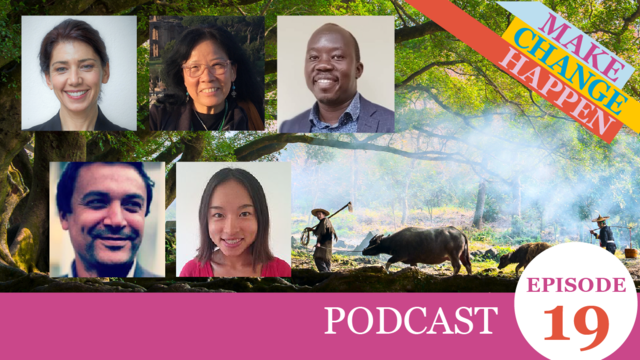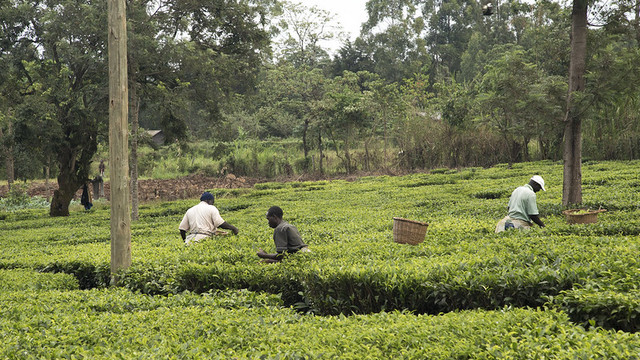Chinese media in Africa
The ‘Chinese media dragon’ is raising its voice in Africa—and drawing criticism. So how much is cultural bias, and how much legitimate concern?


Think China, think dragon – the universal personification of China and Chinese culture, usually described ‘roaring’ or ‘waking’.
Westerners’ eager embrace of this image reflects much more than a recognition of the dragon’s place in Chinese culture, history, and cosmology. Dragons are deeply established in both Chinese and Western imaginative traditions, but in intrinsically different forms. The Chinese associate dragons with goodness, fortune, and might, while in the West dragons are sinister, threatening, and unnatural.
The dragon has come to especially represent China as a rising (if you are Western) or resurging (if you are Chinese) international power. And in the West, China’s growth and international reach is viewed with an inherent assumption of sinister intent.
That dragon is now roaring loudly in Africa. China’s state news agency, Xinhua, set up its African bureau in Nairobi in 1986, and now has 28 branches covering 47 countries. And in January 2012, China Central Television launched CCTV Africa. China has also made integral contributions to media infrastructure in Africa, and developed exchange and education programmes for Chinese language and culture. Amongst these trappings of soft power, media expansion is inextricably linked with China’s growing international participation in global institutions and processes, offering an alternative to, and coming into tension with, traditional Western media, aid, development, and cultural hegemony.
Former BBC Africa editor, Martin Plaut, challenges the independence of Chinese media institutions. At a conference in November he pointed out the BBC’s extensive coverage of damage wrought by Western companies — and the lack of a Chinese equivalent, asking, “How do you cover those stories where there is a critical Chinese involvement — where it is a difficult one for you? That is the critical test [of] credibility.”
CCTV Africa head, Song Jianing, responded, “If you have watched CCTV, we normally just report African content and business reports and talk shows, where all guests are African – so actually there is no propaganda.”
The Chinese media in Africa staunchly deny accusations of pro-China propaganda, whether it be deliberately positive portrayals of Chinese involvement, or the state-owned nature of their institutions. At the same conference, Xinhua Africa head, Wang Chaowen, challenged even unmade accusations, deflecting questions about financial support and how new media can generate revenue with statements that Xinhua receives only 28% of its costs from the government; then embarking on a long, colourful and evasive journey through a forest of vague Chinese sayings.
Media and development are indeed inextricably linked, and the Chinese media do enunciate clear differences in mission. Song says CCTV expanded to Africa “to report Africa from an African perspective” and “as a friend of Africa … to portray the true picture of Africa to the world” more positively, holistically, and respectfully, without losing sight of the continent’s success. Is that the whole truth? Well that’s debatable, but she does have a point – Binyavanga Wainaina’s skit on ‘How to write about Africa’, published in 2005, still rings horribly true, and Western headlines about Africa do skew towards failure and despair.
Wang emphasizes Xinhua’s strong commitment to “public interest and social responsibility” as especially important in Africa, citing cooperation with numerous UN agencies on projects covering poverty, environment, and climate change.
And the Chinese don’t only describe China’s involvement in Africa differently, they see it differently. Narratives framing Africa in the language of opportunity and solidarity reflect China’s genuine perception of Africa as a land of opportunity; while emphasis on failure and suffering reflects the West’s continuing perceptions of the continent. African attitudes to China are not brainwashed by Chinese propaganda—more often they are shaped by a sense that China treats Africans as equal business partners, with solidarity and hope, while the West maintains a paternalistic, less effective, aid-based relationship.
That is not to ignore the limitations of Chinese media and involvement in Africa. Both share serious problems of corruption, overly top-down emphasis, and lack of transparency and accountability.
But contrary to the Western lens, which sees a homogenous and monolithic China in Africa, there is pluralism and dynamism in Sino-African relations. Just as Africa is incredibly diverse, African perceptions of China vary hugely. And while there is much African debate around the ‘Beijing development model’ — economic growth through market reforms without full-scale political liberalisation — it faces interrogation in China as well. Some Chinese are arguing that development based on ever-greater consumption of resources is unsustainable, and that its outcomes have been inequitable.
So the role and censorship of the media are being debated and tested. How these domestic debates will unfold is not clear. But their international importance, in the context of China’s growing soft power, and its position as a model in the developing world, certainly is.
About the author




